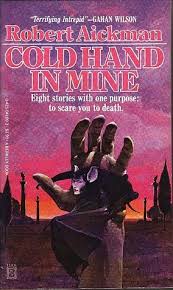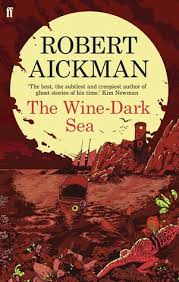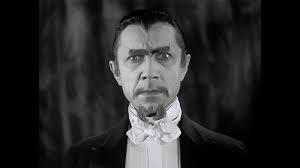
© Halperin Productions
Does the sun seem to be shining a little less brightly, or a little more darkly, today? Does the air seem unusually clammy, redolent of Edgar Allan Poe’s ‘the bleak December’ rather than the cusp-of-summer May? Do the people walking past on the street seem to be sporting a tad more kohl eyeliner than normal? Are you staring at your TV, unsure if the pudgy, chaotic, tousle-haired figure you see on the screen is indeed Boris Johnson and not Robert Smith?
If the answer is ‘yes’… Well, this is probably because today, May 22nd, is World Goth Day. According to Wikipedia, the idea of having a day dedicated to the planet’s blackest-clad subculture ‘originated in the United Kingdom in 2009 initially as Goth Day, a smaller scale celebration… inspired from the broadcasting of a special set of shows on BBC Radio 6.’
So, to mark the occasion, here’s a playlist of my dozen favourite Goth tunes, with YouTube links. (My apologies for any ultra-irritating YouTube advertisements that might pop up at the beginning.)
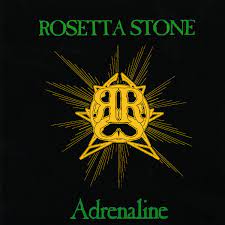
© Cleopatra
First up is the Goth-dancefloor fixture Adrenaline by Liverpudlian band Rosetta Stone. Actually, when I think of all the Goth nights I attended in my youth in places like Edinburgh, Norwich and Newcastle-upon-Tyne, this is the only tune I remember the DJs playing. Yes, I know they must have played other stuff, but this is the one song that accompanies my memories of those events. (Maybe they did play Adrenaline all night long, in a Gothic variation on that Father Ted episode where Ted and Dougal organise a charity disco and then realise they only have one record, the Specials’ Ghost Town.)
I’ve heard many authorities declare that Bauhaus’s Bela Lugosi’s Dead is the greatest Goth song of all time. But by way of something different, I’ll offer this tune instead, which is a cheeky riposte to the venerable Bauhaus anthem: Bela Lugosi’s Back by the fabulously titled Lesbian Bed Death. I love how they’ve peppered the song’s video with footage from that hypnotically weird and dream-like movie White Zombie, which had Lugosi as its villain back in 1932.

© Polydor
I’m a big fan of Siouxsie and the Banshees, but I thought on this playlist I’d include something from the formidable SIouxsie Sioux’s other band the Creatures, which she formed with fellow Banshee and one-time husband Peter ‘Budgie’ Clarke. I’ve had a fondness for the Creatures ever since seeing them perform a storming set at Edinburgh’s Queen’s Hall in 1999. This is called Pluto Drive and listening to it always lets a few tingles loose on my spine.
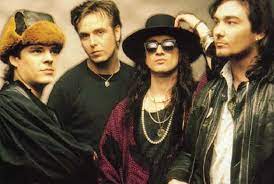
A band I saw in Edinburgh during the same period, though this time at the city’s Liquid Rooms, was the Mission. Now it was customary that when the Mission played their most famous number, the Led Zeppelin-esque Tower of Strength, their die-hard fans – who were known as ‘the Eskimos’ – would climb on top of each other and create a human tower in the middle of the auditorium. Well, not so much a tower as a pyramid, with lots of Eskimos on the floor forming its base, and smaller numbers of them forming the higher levels that tapered up to its apex. This was easy to do during the Mission’s heyday in the 1980s, when those Eskimos were mostly lean, lithe and light teenagers. However, by the late 1990s, the Eskimos had got not only a wee bit older but also a wee bit heavier… And I watched the building of that human Tower of Strength with some trepidation. Predictably, the whole thing soon wobbled and toppled over. But at least no Eskimos were hurt.
Anyway, here’s the song Belief from the Mission’s 1990 album Carved in Sand. I don’t know why this song isn’t better known, as I always thought it was an epic, relentless thing epitomising the band at their bombastic best. (Though some unkind critics would probably reword that as ‘at their bombastic worst’.)
Similarly, I don’t know why this next tune, Number One by the German outfit Clan of Xymox, isn’t better known either. It soars in an impeccably synth-y way.
I’d like to think that if, besides being tested for the ethnic groups you came from, your DNA could be tested for the musical sub-cultures you belonged to, my DNA would show a strong ‘Goth’ component. However, also being a fan of heavy metal, I’d hope that it showed a big ‘metalhead’ component too. Thus, my next two choices lie in that fascinating area where the two genres, Goth and heavy metal, overlap. First, here’s the wonderfully sepulchral – thanks to the band’s vocalist, the late Peter Steele – Everyone I Love is Dead by Type O Negative.
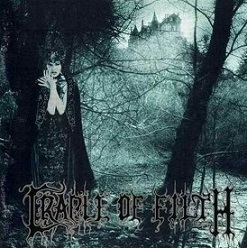
© Music for Nations
And here’s the finest goth-metal band to ever hail from Country Suffolk, East Anglia: Cradle of Filth. Their song A Gothic Romance: Red Roses for the Devil’s Whore follows a tried-and-trusted Cradle of Filth formula, starting with a civilised, classical-music opening, but rapidly descending into howling, pounding, guitar-mangling chaos. As ever, the croaking / shrieking vocals of Suffolk icon Dani Filth are at the forefront.
Now it’s time for another Goth dancefloor-stomper. It’s hard to resist Doctor Online by industrial Norwegian outfit Zeromancer, a song I assume was inspired by the infamous, euthanasia-supporting Doctor Jack Kevorkian, aka ‘Doctor Death’.
Canadian band the Birthday Massacre are smartly named. The word ‘birthday’ suggests glowing candles, ornately decorated birthday cakes and, generally, the magical happiness that people associate with childhood memories of their Big Day; while the word ‘massacre’ suggests, well, blood, darkness and death. That juxtaposition sums up Goth perfectly. And here’s their song Happy Birthday, whose vibe nicely blends that sense of child-like wonder with sinister premonitions that something bad is going to happen.
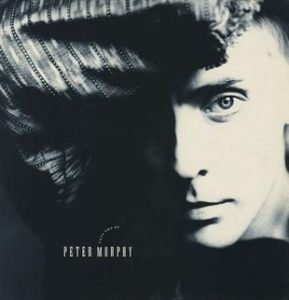
© Beggars Banquet
Returning to Bauhaus for a moment, I find this solo effort by their celebrated frontman Peter Murphy, Cuts You Up, poignant and rather lovely.
The young band Savages – okay, that’s young by my standards: they formed in 2011 – are described in their Wikipedia entry as a ‘post-punk, noise rock, alternative rock’ outfit. That description sneakily avoids using the ‘G’ word… But come on. I defy anyone to listen to their song Husbands and not think of Siouxsie and the Banshees at their imperious best.
Finally, how else could I finish this post but with a link to the greatest Goth anthem ever, the Sisters of Mercy’s majestic, thunderously operatic This Corrosion? Be warned – this is the 11-minute remix. By the end of those 11 minutes, after you’ve been bludgeoned into submission by singer Andrew Eldritch and Patricia Morrison’s caterwauling vocals, by producer Jim Steinman’s celestial choirs and Wagnerian guitar-squalls, and by that never-ending chorus of “Hey, now / Hey, now now…”, you will be begging the Sisters for mercy.
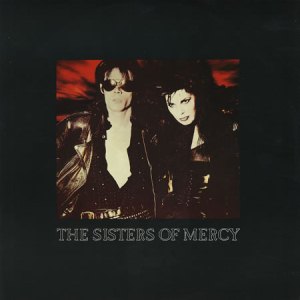
© Merciful Release


